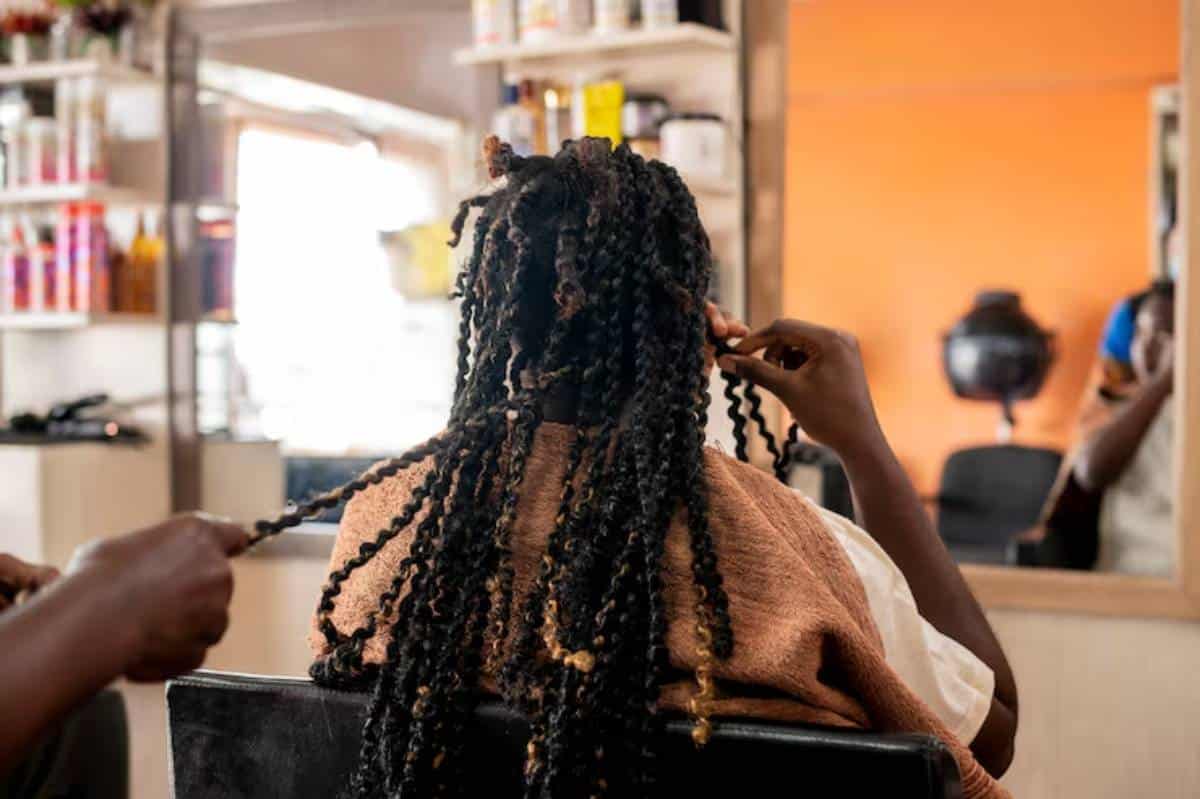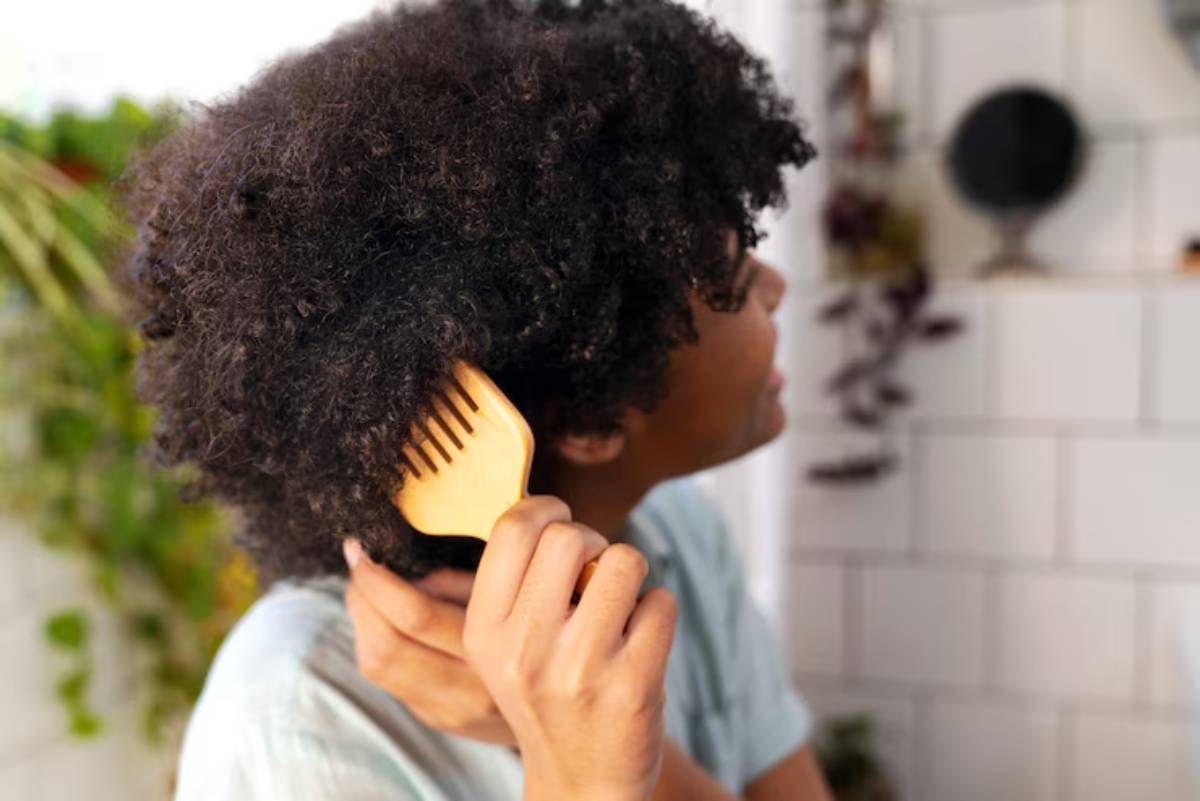
Type 4 Hair Care: Coils and Kinks Explained
Introduction: Embracing the Beauty of Type 4 Hair
Type 4 hair — tightly coiled, beautifully textured, and bursting with personality — often stands out for its volume, density, and intricate curl patterns. But with all that beauty comes a fair share of challenges. From dryness to shrinkage, and from breakage to finding products that actually work, navigating the world of Type 4 haircare can feel like a full-time job.
This guide is designed to help you understand your coils, break free from common misconceptions, and build a care routine that celebrates your hair’s natural strength. Whether your strands are 4A, 4B, or 4C — or a combination of all three — this blog will give you clarity, confidence, and curl-loving advice rooted in both science and experience.
Understanding Type 4 Hair
What Is Type 4 Hair?

Type 4 hair is categorised by its tight curls or kinks, often appearing as ‘Z’ shaped or densely packed coils. It’s commonly divided into three subtypes:
- 4A: Defined, tight coils with a visible curl pattern. Hair is soft and retains moisture better than 4B and 4C.
- 4B: More of a zig-zag pattern. Hair is fluffy, with less definition but lots of volume.
- 4C: The tightest pattern with minimal definition. It shrinks the most (up to 75%) and is highly prone to dryness.
Shared Characteristics
Regardless of subtype, type 4 hair:
- Is naturally dry due to the curl structure blocking sebum from travelling down the strand.
- Shrinks significantly, making it look shorter than it really is.
- Requires consistent hydration, gentle handling, and protection.
Cleansing: Gentle Is the Name of the Game
Co-Washing vs. Shampooing
Because type 4 hair is fragile, frequent shampooing can strip away essential oils. Here’s how to balance it:
- Co-washing (using a cleansing conditioner) is perfect for mid-week refreshes or between shampoos.
- Use a sulphate-free shampoo once every 1–2 weeks to remove buildup.
- Look for ingredients like aloe vera, marshmallow root, or coconut-derived cleansers.
Scalp Care Is Hair Care
Even though you’re focusing on your coils, don’t forget your scalp:
- Gently massage while cleansing to stimulate circulation.
- Clarify monthly with apple cider vinegar or a clarifying shampoo to remove excess product and dead skin.
Moisturising: The Core of Type 4 Hair Health
Daily Moisture Boosts
Type 4 hair needs moisture daily or every other day, depending on porosity:
- Use a water-based spray or mist in the morning.
- Follow with a light oil to seal in hydration (e.g., jojoba or avocado oil).
The LOC or LCO Method
This is the gold standard for moisture retention:
- L = Liquid (e.g., water or leave-in conditioner)
- O = Oil (e.g., coconut, olive, grapeseed)
- C = Cream (curl creams, butter-based stylers)
Switch the order (LCO) if your hair is low porosity and struggles to absorb heavier products.
Want to dive deeper into the hydration process? Check out our guide to the LOC Method for Maximum Moisture
Styling: Stretch, Define, and Protect
Choosing the Right Techniques
With type 4 hair, styling is often about balancing definition and protection:
- Twist-outs and braid-outs create stretched, defined styles without heat.
- Wash-and-go can work for 4A or well-moisturised 4B curls, but less ideal for 4C due to shrinkage.
- Bantu knots and flexi rods add stretch and volume.
Curl Definition without Flakes
- Apply stylers (gels, butters, curl puddings) in sections.
- Avoid product overload — less is often more.
- Look for non-alcoholic gels and stylers with castor oil or shea butter for hold and shine.
Protective Styling: Growth and Retention
Why Protective Styles Matter
Type 4 strands are prone to breakage from manipulation and friction. Protective styles reduce this risk:
- Styles to try: Box braids, twists, flat twists, cornrows, wigs, or updos.
- Key rule: Keep styles for 2–6 weeks max and avoid excessive tension.
- Moisturise and oil your scalp even while your hair is tucked away.
Night-Time Protection
- Use a satin or silk scarf, bonnet, or pillowcase.
- Try the pineapple method (a loose top bun) if you sleep on your back.
Deep Conditioning: Your Hair’s Weekly Ritual
Type 4 hair benefits immensely from weekly deep conditioning:
- Choose formulas with humectants (like glycerin and honey) for moisture.
- Alternate with protein treatments (every 4–6 weeks) to strengthen hair structure.
Use heat caps or steamers to help products penetrate, especially if your hair is low porosity.
Detangling: Gentle Wins the Race
How to Detangle Without Damage

- Only detangle when your hair is damp and saturated with conditioner.
- Use your fingers first, then follow with a wide-tooth comb if needed.
- Work in small sections — be patient and gentle.
Learn how to detangle safely in our article: How to Detangle Curly Hair Without Damage
Growth, Trims, and Scalp Health
Does Type 4 Hair Grow?
Absolutely — but retaining length can be a challenge:
- Keep ends moisturised and trimmed every 8–12 weeks.
- Avoid heat and chemical damage.
- Massage your scalp regularly with growth oils (e.g., rosemary, peppermint).
Scalp TLC
Healthy hair starts at the scalp:
- Cleanse gently but consistently.
- Avoid heavy grease on the scalp — it clogs follicles.
- Use lightweight oils or scalp serums with tea tree or niacinamide for balance.
Common Mistakes to Avoid
- Skipping moisture leads to breakage and single-strand knots.
- Too much manipulation: Causes stress and splits.
- Using the wrong tools: Ditch fine-tooth combs and boar bristles.
- Overdoing protein: Listen to your hair — balance is everything.
- Neglecting trims: Split ends travel upward and ruin length goals.
Conclusion: Celebrate Your Crown with Care
Type 4 hair is a masterpiece — a living, breathing crown that coils with pride and resilience. While it may require more time, patience, and love, the payoff is undeniable. When properly cared for, your curls will flourish, retain length, and make a statement without you saying a word.
So remember: hydrate, protect, be gentle, and enjoy the journey. Your coils aren’t meant to be controlled — they’re meant to be celebrated.


